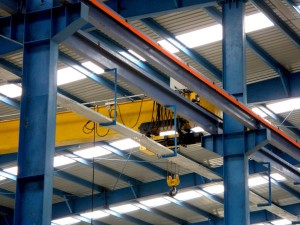
The alert is meant to remind employers and workers about the risks and dangers of the unsafe use of a crane.
The background
In recent months WorkCover NSW has been required to respond to two separate incidents during which doggers received serious injuries whilst the crane was being operated.
- The first incident happened when a 1.2 tonne I-beam was being lowered for storage. Instead of resting on its flange the beam rolled forward crushing the lower part of the dogger’s leg.
- The second incident happened when, during a pick and carry operation, the dogger was walking the load. The dogger was hit by the crane and received crush injuries to both of his legs.
The contributing factors
The investigations are still being conducted into both of these incidents but it is already understood that:
The first incident:
- The support packers for the I-beam were not level at one end of the beam
- The flange for the I-beam was narrow compared to the height of the beam
- After the beam was put onto the top of the packers the chain lifting slings were taken away
The second incident:
- The load was not tethered by tethers
- Instead of using tag lines the dogger was walking the load by hand
- The dogger was placed on the side that was opposite the crane driver’s cabin
The factors that are listed below may hold no relevance to the two incidents but may affect similar operations:
- It does depend on the size of an I-beam but generally if it is stored upright on the flange then it will not be as stable as being stored on its side.
- It is necessary to ensure that lifting slings do not contact the load after they have been removed because they may cause it to become unstable.
- When cranes are required to travel over speed bumps and inclined/declined roadways while carrying loads, the loads may move or become unstable. Sometimes they can also serve as a trip hazard for doggers especially if the crane suddenly changes speed.
- There always needs to be adequate lighting when operations are conducted (the second incident was in the early morning) and adjustments may need to be made if operations are outside regular daylight hours.
The action required
Risks need to be identified whenever workplaces are using plant and the following need to be considered:
- If the plant is appropriate for the task
- Are the workers properly trained and supervised
- Is there adequate staff available for the work
- How close that the plant will be to all workers that may be affected by its operation
All risks must be minimised through control measures and through consultation with workers.
Specific control measures
Before a crane is used ensure:
- There are enough workers available to assist with the lifts that are suitable and qualified
- A qualified person is available to sling the load
- That the landing area is appropriate for the load being moved and that the crane can be detached safely
Whilst using a crane to lift ensure:
- There is a dogger available
- Competent workers are used to maneuver loads
- The load must be stable after it is landed and secured where appropriate
When undertaking pick and carry operations ensure:
- Crane drivers can see the doggers at all times
- The loads are tethered during the transportation of the load or if this will affect the load stability use a tag line that is long enough to allow the dogger to stay clear of the load fall zone
- That a dogger has the ability to walk at a pace that is comfortable – don’t forget to take into account that they must travel over
Additional Information
- The Australian Standard AS2550 Part 1 Safe use of cranes – general, which is available at saiglobal.com
- The Industry plant consultative committee safety alert remotely operated tower cranes (catalogue no. WC02823) and the How to manage work health and safety risks: Code of practice (catalogue no. WC03565), which are both available at workcover.nsw.gov.au



